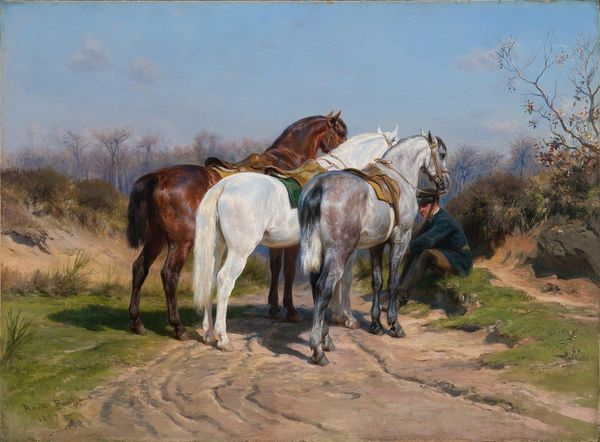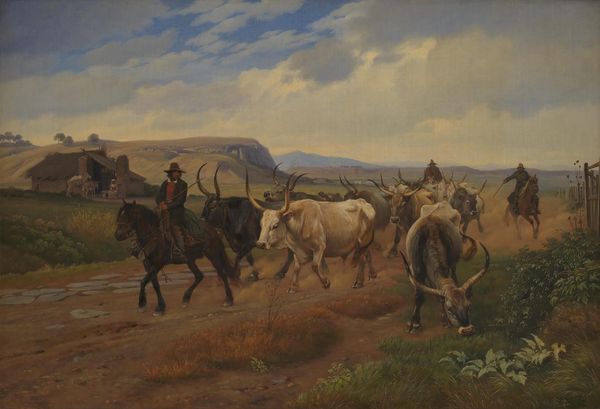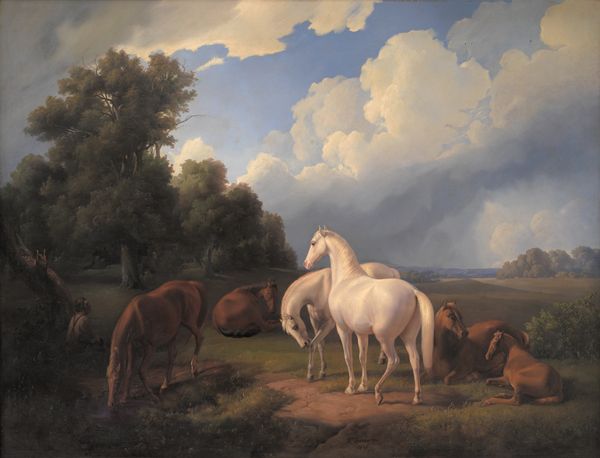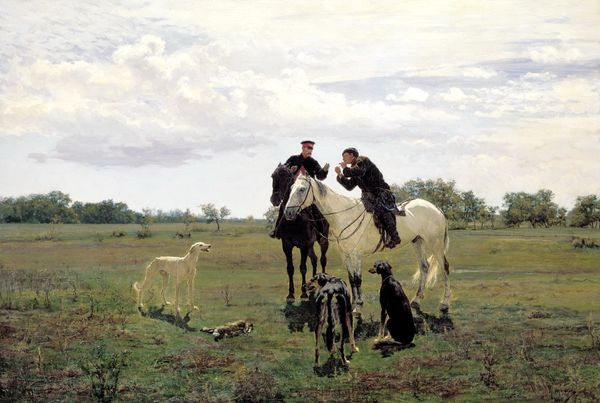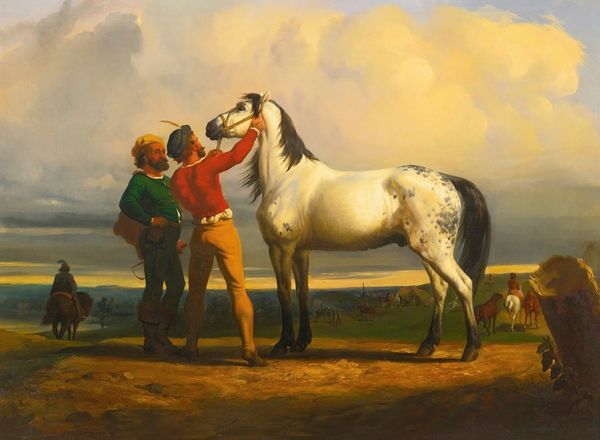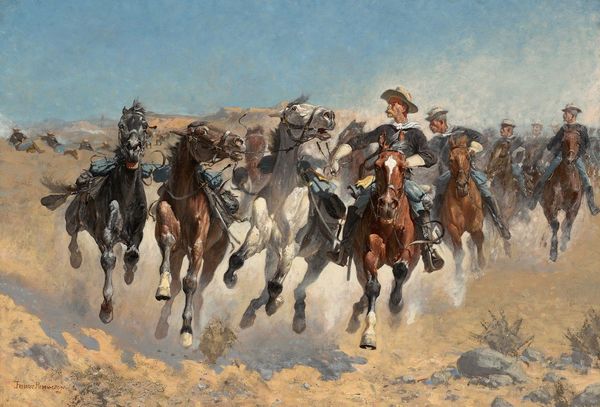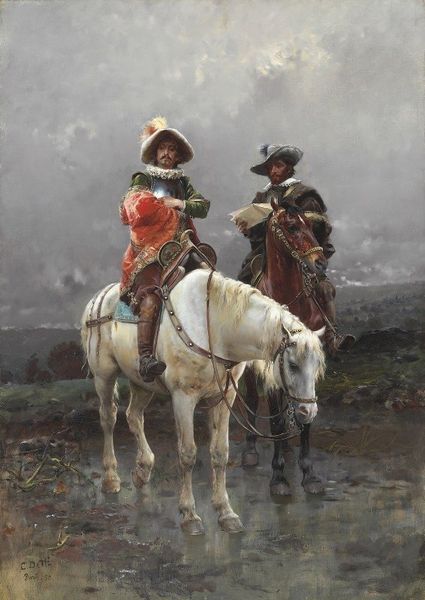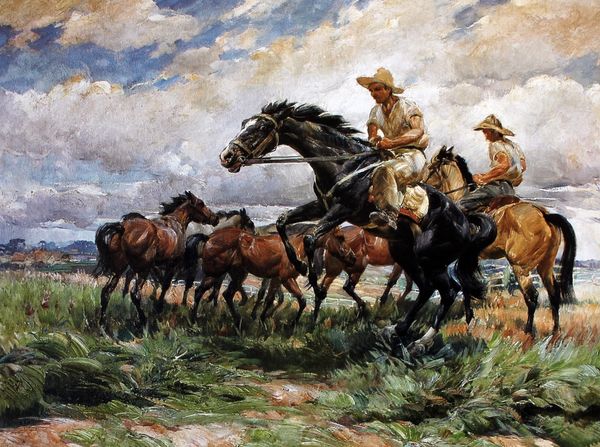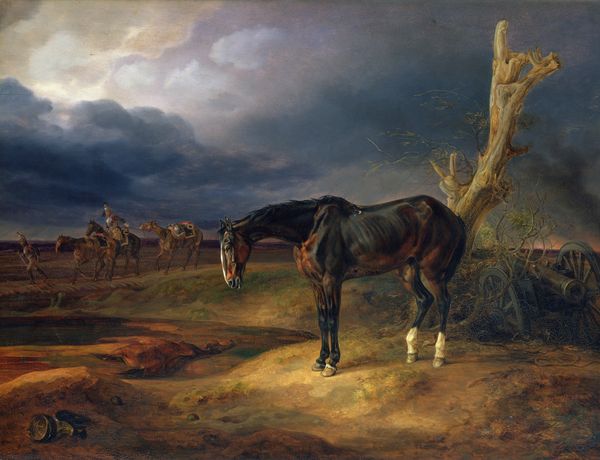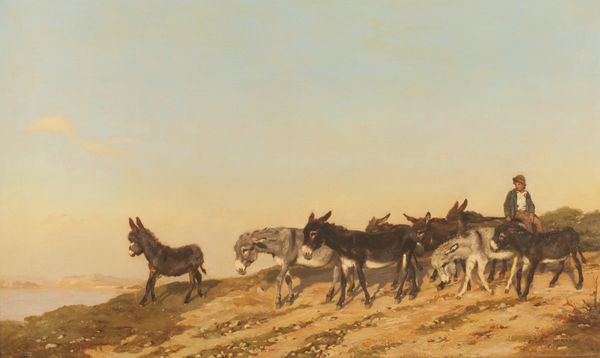
Copyright: Public Domain: Artvee
Curator: Rosa Bonheur painted this striking oil on canvas titled "Pyrenees Farmers, Market Bound" in 1884. Editor: My first impression is how grounded it feels—literally! Look at the mud, the weight of those animals. The textures almost feel palpable, a testament to the physical world and work. Curator: Absolutely. Bonheur, defying convention, found fame depicting animals with unparalleled accuracy. She visited farms, slaughterhouses, even dissected animals to understand their anatomy intimately. This wasn't mere observation; it was rigorous study. Editor: It is an incredibly tactile approach, visible in the detail of the horses' musculature and the dampness radiating from the road surface. We see Bonheur's process here: she’s not just painting an image, she's conveying labor and lived experience. Curator: And beyond the craft, Bonheur challenged the art world’s inherent biases. Her success demonstrated that female artists could achieve critical acclaim and financial independence by bucking societal norms. This work offers a window into rural life but it was revolutionary in how it impacted societal perceptions. Editor: Definitely. She's documenting not just a subject but a world of material exchange – animals, produce, the people connected to them. Did Bonheur think of herself as documenting social strata too, I wonder? Were these images consciously produced to confront elitism in artistic creation? Curator: The context of its reception reveals much, regardless of her original intent. Bonheur achieved recognition within official Salon exhibitions, gaining honors usually reserved for male artists. The painting became not only celebrated artistic work, but also as evidence for the social and institutional potential for change. Editor: And she did that by focusing on the fundamentals, the animal and human connection within agriculture: material realities that always must matter. "Pyrenees Farmers, Market Bound" resonates not only with its skilled crafting of texture but its place as both a historical artwork and an iconoclast. Curator: I think your read captures Bonheur's legacy nicely. I'm reminded to examine my own assumptions about art's purposes. Editor: Me too, by going to its physical presence: feeling both our current time and imagining it in 1884.
Comments
No comments
Be the first to comment and join the conversation on the ultimate creative platform.

